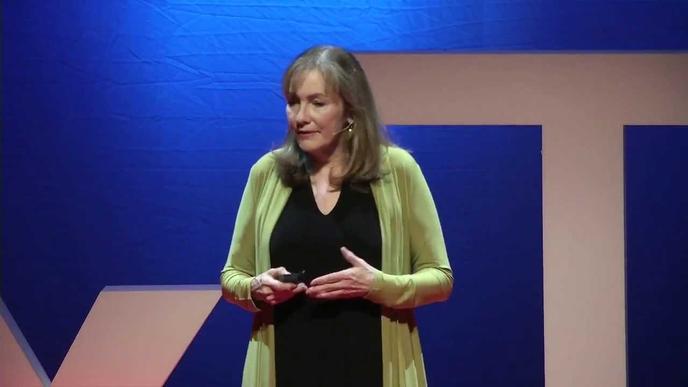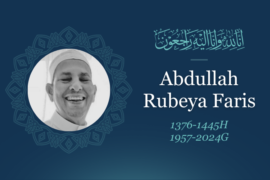![[Productive Thinking Series - Part 3] Critical Mindset on Learning and Productivity | Productive Muslim [Productive Thinking Series - Part 3] Critical Mindset on Learning and Productivity | Productive Muslim](http://cdn-61dc8321c1ac18f874f6c789.closte.com/wp-content/uploads/2013/10/93679057_6d10cad27c_n.jpg)
This article covers a model called ‘Critical Mindset on Learning & Productivity’ that can easily be used to overcome any thinking problem that people have around learning and productivity.
Fixing the Fixed Mindset
It is important to understand the two different types of mindset that Stanford University psychologist, Carol Dweck, talks about in her book appropriately named ‘Mindset’ – the fixed mindset and the growth mindset.
People with the fixed mindset tend to think that their intelligence or capability is fixed. For example, some ‘smart’ people think they are smart because that is the way they are born. They think they need to look smart in every situation and are very averse to taking on challenges because they do not want to fail or look foolish. They have the tendency to attach their self-worth and identity to their work or the end result and have the need to prove themselves. They do not move forward unless they are certain that they can succeed. They tend to approach everything with the attitude of ‘all or nothing’ and give up easily in the face of setbacks.
On the other hand, people with the growth mindset know that everything can be changed and different intelligence and skills can be developed. They like stretching themselves to take on new challenges and view every misstep or mistake as something that is helping them grow and becoming who they need to be to go to the next level. The have no attachment to the results that they get and focus mainly on their effort. They are grateful for the ’gradual improvements’ on the journey of learning and mastering different skills.
So, people who are successful in life tend to have the growth mindset. That is what allows them to persist and have patience while working hard to achieve their goals.
From the physical perspective, our brains have the amazing ability to adapt and form new connections as we learn, practice and develop new skills; literally, rewiring our brains. In this Ted Talk, Barbara talks about how she overcame her severe learning disabilities and is now helping other children do the same.
There is nothing too big or impossible for The Most Generous to grant us. Even if you think that things are predestined for you, they can be changed by being sincere and making dua.
Really there are no excuses. You are good enough. The real question is, “Do you want it bad enough?”
Dua or prayer involves intention, expectation, conviction and most importantly commitment to do whatever you can to make whatever you want into a reality.
Here is one of my favourite quotes by James Allan: “Your circumstances may be uncongenial, but they shall not long remain so if you but perceive an Ideal and strive to reach it. You cannot travel within and stand still without.”
Going from a Disaster to a Master
Okay, so here are the four levels or steps that everyone has to go through when they want to learn something new. I call these stages from being ignorant to being intuitive at any skill that you want to master, be they mental or physical skills.
1. Ignorance
The first stage is what is called ‘unconscious incompetence’. This stage is where ‘ignorance is bliss’, so to speak. You don’t know what you don’t know, and you are unconscious about what you are incompetent at. But the truth is that ignorance is never bliss – there is always a price to pay for not knowing.
2. Incompetence
The second stage is called ‘conscious incompetence’. Now, you become conscious about what your incompetent at; you know that you don’t know and what you don’t know. Now that you have taken a step to finding out more about that subject or skill that you want to learn and master, you realise that there are things that you don’t know; the different steps or sub-skills that you need to master. This stage often feels overwhelming and leads to discouragement.
3. Implementation
The third stage is called ‘conscious competence’. Now, you are starting to learn, think and do different steps consciously, practice, practice and practice some more. This stage is where people usually get stuck or give up because what they originally thought was going to be easy has proven otherwise – not unusual with learning any new skill. You will make lots and lots of mistakes. This is the stage where you need to have a growth mindset. It takes patience, persistence, perseverance and prayer to go to the next level.
4. Intuitiveness
The last stage is called ‘unconscious competence’. This is where a skill becomes a habit or what is usually called second nature. You have practised something so much that you do not have to consciously think about executing the steps. The correct process becomes ingrained in you. Now, it just works! It has become an unconscious program that you can run just like any other programs that you have learned, practised and mastered, e.g., walking, brushing your teeth, tying your shoes, speaking in your mother tongue, riding a bicycle or driving a car.
It is the same process with learning Arabic, memorising the Qur’an, learning and developing productive habits and techniques, and even overcoming your negative self-talk and emotions. Any negative habit that you want to break or positive habits that you want to build, you can consciously identify and apply yourself through these stages until the habit you want becomes instilled in you.
Steps to Effectively Learning a New Skill
The following are steps that you can take inspired by this interview, where a self-confessed learning addict, researcher and author of the book ‘The First 20 Hours: How to Learn Anything… Fast!’, John Kaufman, talks about the strategies to use to learn any skills in 20 hours.
1. Set a goal
- Be specific: figure out what you want to learn and why you want to learn it.
- Have a clear picture of what it is going to give you to learn and master it.
- Come up with as many reasons as you can as to why you can do it.
2. Deconstruct the skill into sub-skills
- Research and work out the most important sub-skills to master first.
- For example, want to know the meaning of the Qur’an? Here you can learn and understand 50% of the words in the Qur’an in just under 10 hours.
3. Remove physical and emotional barriers to practice
- Understand that the most important barrier will be your emotional barrier.
- Keep in mind that there are no avoiding making mistakes. It does not feel good to be incompetent at something. No one wants to feel or look stupid, but sucking at something and making mistakes are all a part of learning a new skill.
- Remember the growth mindset.
- “A person who never made a mistake, never tried anything new.” – Albert Einstein
4. Clear your calendar and schedule in your practice sessions
- Pre-commit to your practice sessions and take into account the consolidation process of your brain.
- Schedule in your calendar and set reminders and notifications.
5. Practice, practice, practice
- Doing the do. Nothing beats action!
- You can know all the steps, but until you apply what you know and implement the steps, you won’t know what works or not and you won’t be able to improve.
So we have learned the importance of growth mindset and how it can help us to be productive and successful in any field that we choose. And we have learned the four stages of mastering any new skills and five practical steps to learning anything in the shortest amount of time.
In the next article, we will learn about the unconscious fears that everybody has that prevent them from being productive and ways to overcome them.
Read the other parts of this series: Part 1 | Part 2 | Part 4 | Part 5 | Part 6 | Part 7 | Part 8




